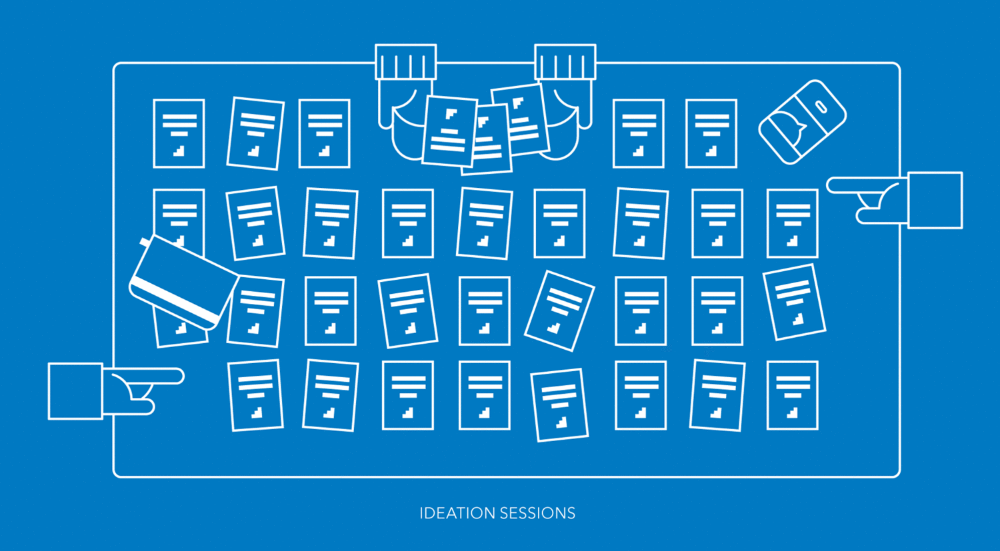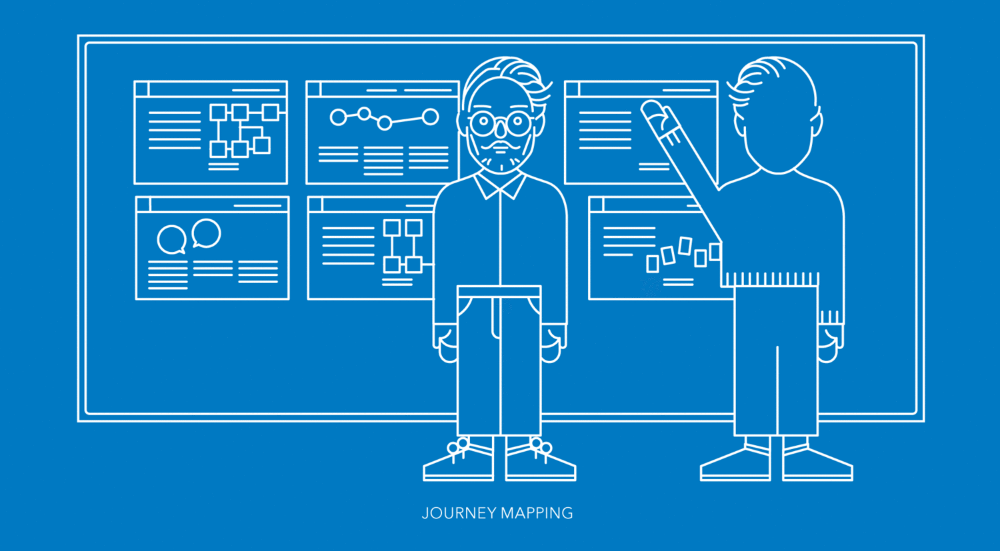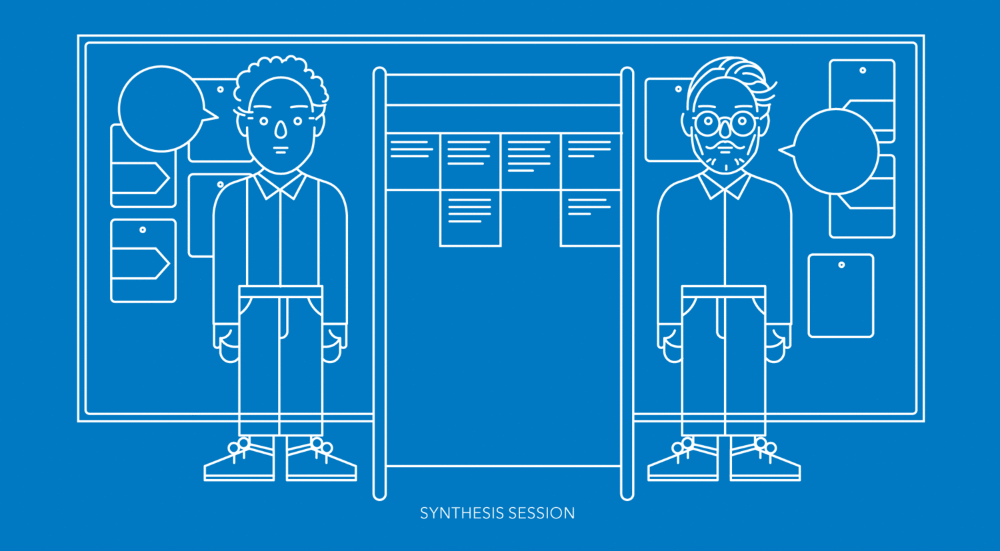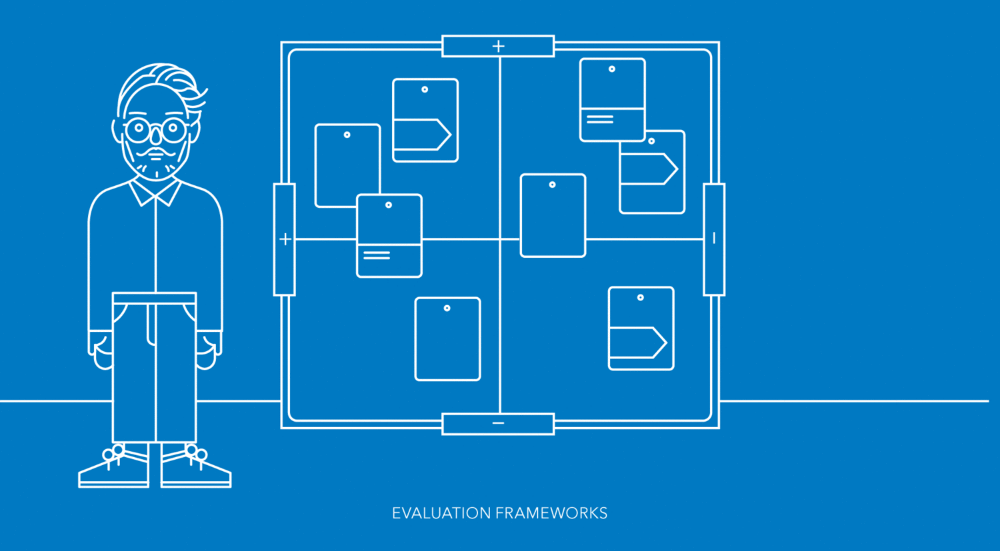Co-Design
CO-DESIGN IN A NUTSHELL
Co-design differs from a process performed exclusively by designers in that it always and necessarily involves the people ultimately affected by the service we produce. The co-design phase of DFE projects overlap with the discovery phase. Knowledge gathered in this phase also informs research which in turn informs the co-design. This process is transformative in that it allows us to think expansively, transitioning from "what is", the merely present to "what if", the possible. It's the imaginative and generative phase of our work, in which we come together with stakeholders to explore ideas for new or improved services that enhance the experiences people have with them. As in the discovery phase, this part of the process is marked by the use of a number of methodological tools, some playful, others more data-driven.
Dedicating ample time and space to co-design helps us to avoid preconceived ideas and prescriptive solutions in favor of change that is reflective of our discovery findings and project goals. Inviting different stakeholders (including service users, when possible and appropriate) to participate in this process allows us to understand multiple and possibly conflicting perspectives on a particular issue, ensure that our proposals are driven by genuine needs rather than our own preferences, agendas, or assumptions. Ultimately it may even enable us to suggest holistic solutions to systemic problems.
WHAT WE DID
Within Tax Time Services we distilled our initial observations of challenges concerning multiple stakeholders into a deck of cards, in which each card signified and described an area of tension as well as a number of opportunities that we were able to identify. In an ideation workshop, this deck of cards was given to teams in one of our co-design sessions. Each team then was asked to identify a challenge and come up with a solution that seemed feasible and necessary to them based on their own experience. Discussion and brainstorming facilitated identification with the project and intellectual as well as emotional involvement of the workshop participants. This process of conceptual divergence yields a large pool of ideas, not all of which may be ultimately feasible. Thus, through this playful creative technique, we were able to collectively generate a large number of solutions which were subsequently sorted into what we called a kit of ideas.
Such a kit, an organizing framework of contained solutions arranged according to the basic chronology of a service, presents a visual arrangement of actionable service concepts. It is thus a useful tool to quickly at a glance get an overview over the large variety of possibilities that may or may not address the problems we observed. This kit of ideas provided the starting point for the convergent process of evaluation, refinement, and selection of the most promising sets of solutions. Subsequently, we identified a number of possible services from the ideas gathered in the kit. While ultimately only a fraction of what was generated in the ideation sessions, We were still facing more possibilities than could be implemented. Nonetheless, these propositional solutions were yet to be evaluated on their actual feasibility within the complex social context of VITA.
From this kit, we plugged the most promising solutions into an evaluation matrix, organized along the dimensions of innovativeness and quantitative-qualitative effectiveness. This map allowed us to position the service concepts in relation to the project goals. In other words, at this point we had to reevaluate what this project was about and what we wanted to achieve. In further co-design sessions we agreed that it would be most reasonable to be able to address and serve more New Yorkers, rather than intensify the existing service.
(Leading up to the The Next Phase) Placeholder
Those suggestions that most fit our goals were mapped out in service blueprints, in which existing services including tension points were compared to the suggested service. At this point we were beginning the prototyping phase without terminating the co-design phase. In short, while we had some useful service proposals, we did not rule out fundamental changes to them if they were found lacking in some way.
What we used - Tools + Techniques
IDEATION SESSIONS
Before deciding on which service concept(s) to prototype or pursue further, we try to consider as many alternative concepts as possible. There are various ways to "ideate," or generate ideas for new services, but brainstorming may be the most common method. Whether its part of an impromptu meeting of collaborators or a facilitated workshop with stakeholders, the basic premise of any brainstorming session is usually the same: generate lots of ideas as quickly and freely as you can.
JOURNEY MAPS
Describing a service is a lot like telling a story. There are characters, contexts, and events; a beginning, middle, and end. So, when imagining a new service or studying an existing one, we often use visual storytelling frameworks -- such as storyboards, timelines, or flowcharts -- to depict a user's journey through the interactions of the service. These visual narratives can be detailed diagrams of the pains and pleasures of a service, or simple sketches of in an intended experience.
SYNTHESIS SESSIONS
Once we're satisfied that we've engaged with all the key stakeholders and entertained as many ideas as possible, we begin the delicate process of combining and selecting the most promising service concept(s) to develop further. Writing each concept as a simple, actionable statements put them all in a common language that's easier to compare. Clustering or combining them helps to reveal redundancies and synergies. We often find new innovations through the simple translation, combination, or reconfiguration of preexisting ideas.
EVALUATION FRAMEWORKS
Choosing the best ideas from a collection of good ideas can be a difficult task, requiring both critique and compromise. Some ideas will naturally generate more conversation or attention, but the outliers and underdogs should not be overlooked. To facilitate decision making and build consensus, we establish clear selection criteria based on the goals and constraints of the project. Placing our ideas into categories or plotting them along axes derived from these criteria, helps organize and prioritize ideas for further development.
References
The Convivial Toolbox - Elizabeth Saunders
Co-Creation in Government - Francis Gouillart + Tina Hallett
Engaging Citizens in Co-creation in Public Services - Satish Nambisan + Priya Nambisan
Tax Time Services Project
Ideation Cards
A tool used to inspire new ideas for tax time services and financial empowerment programs based on challenges and opportunities identified in our discovery work.
Ideation Template
A simple template for sketching out new tax time service concepts inspired by our ideation cards (or other relevant observations, user insights, or discovery findings).









